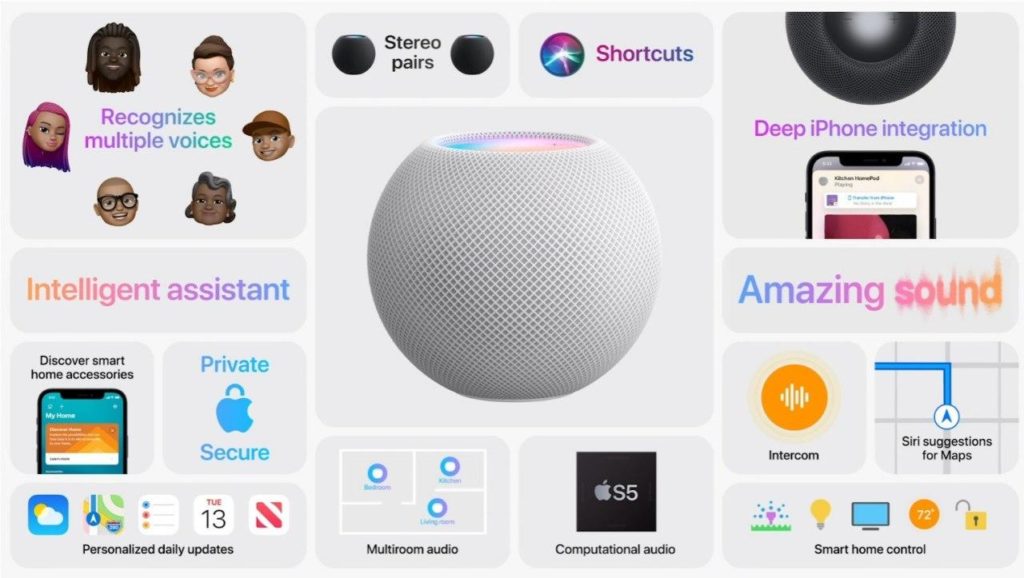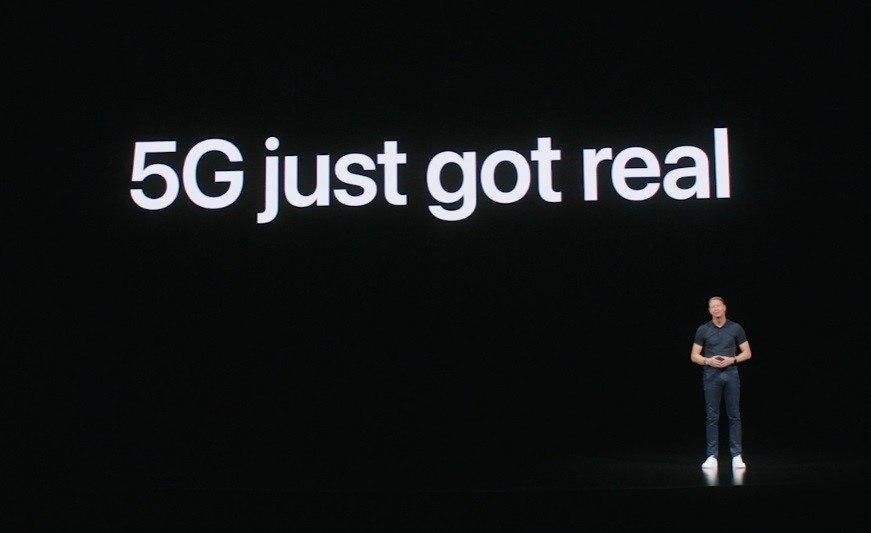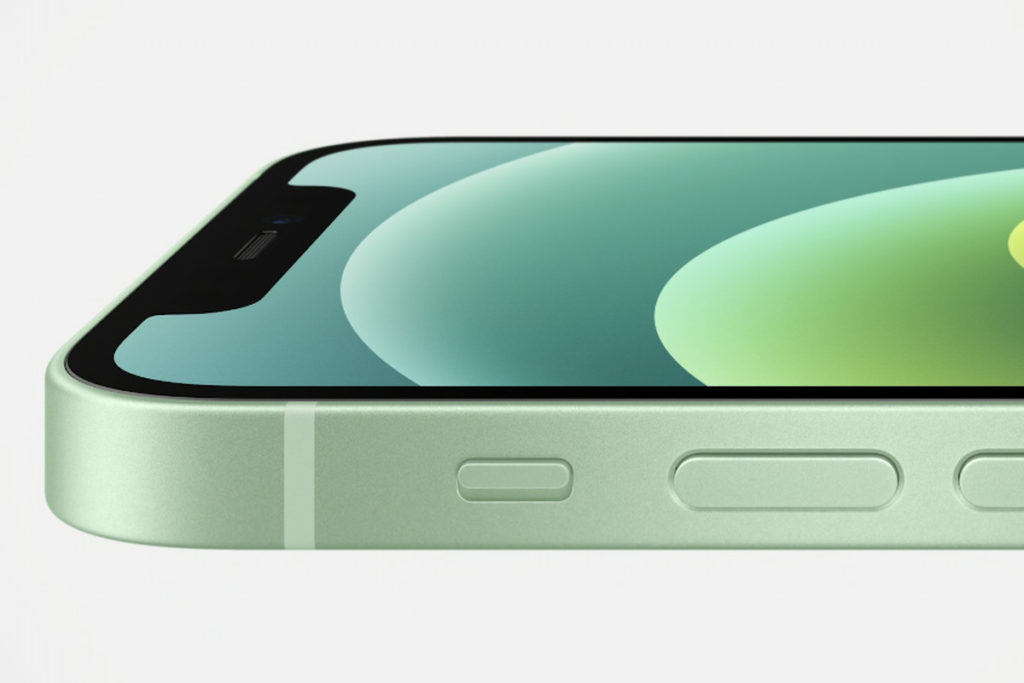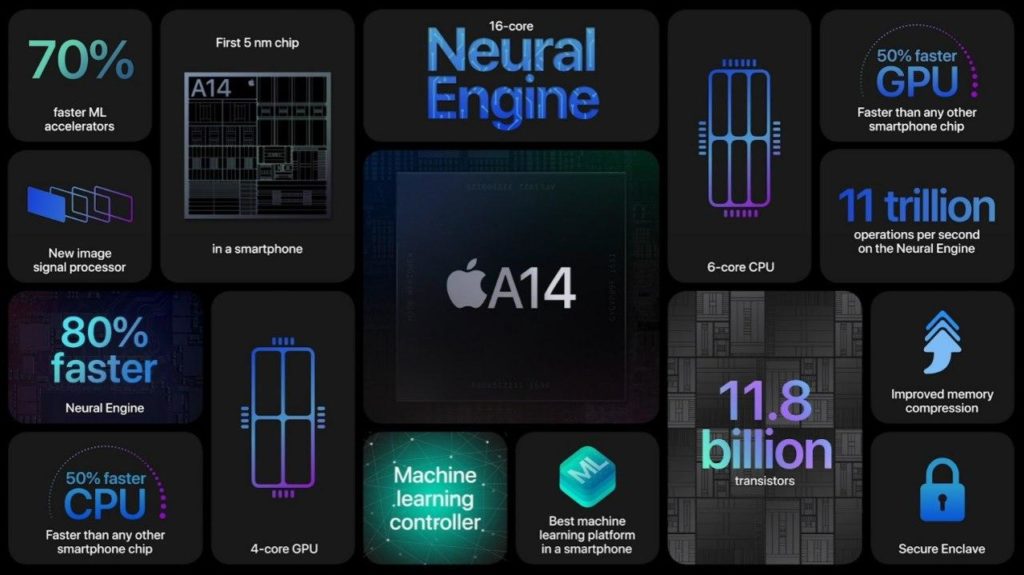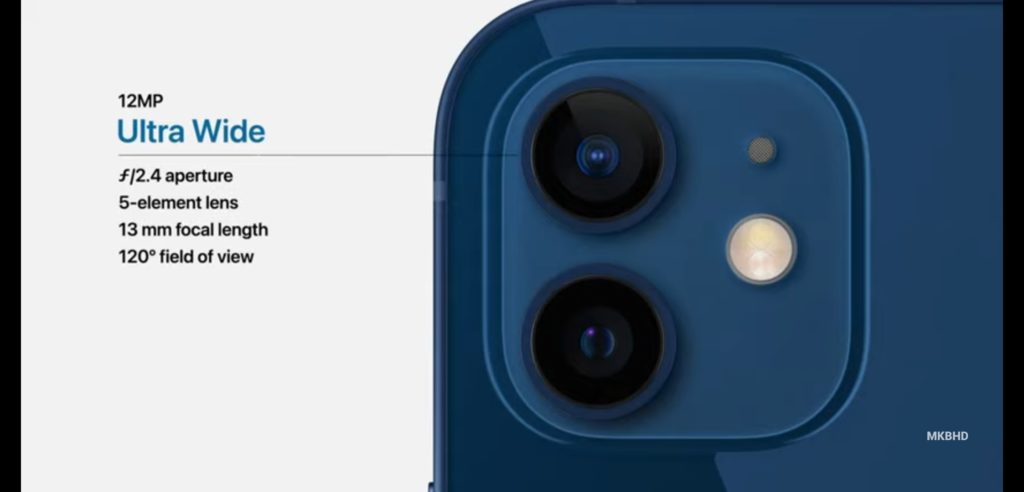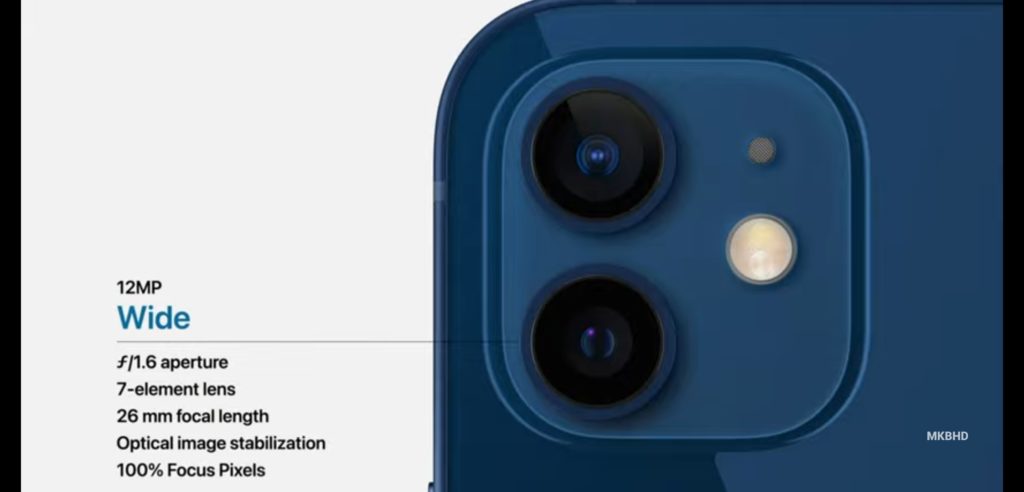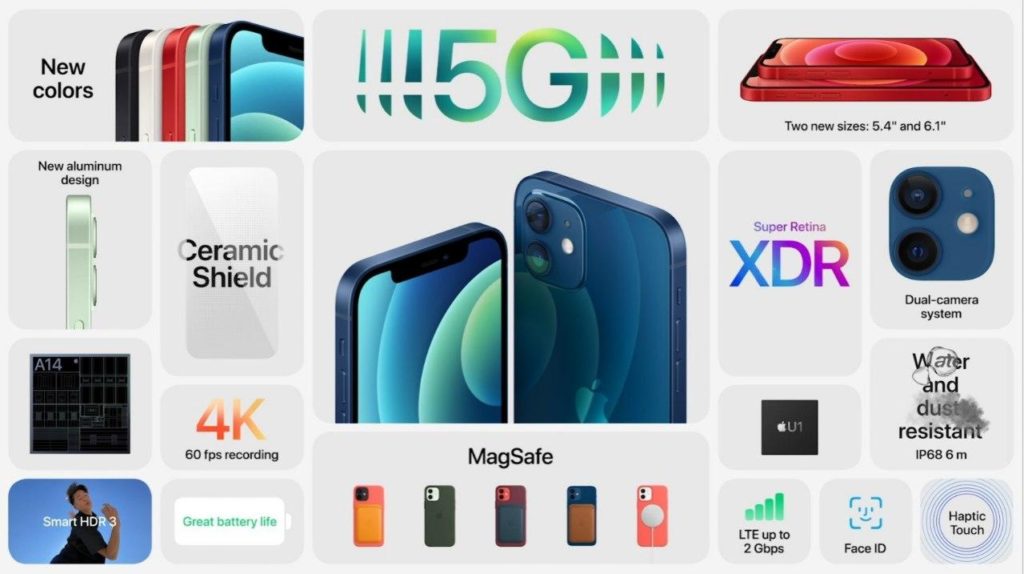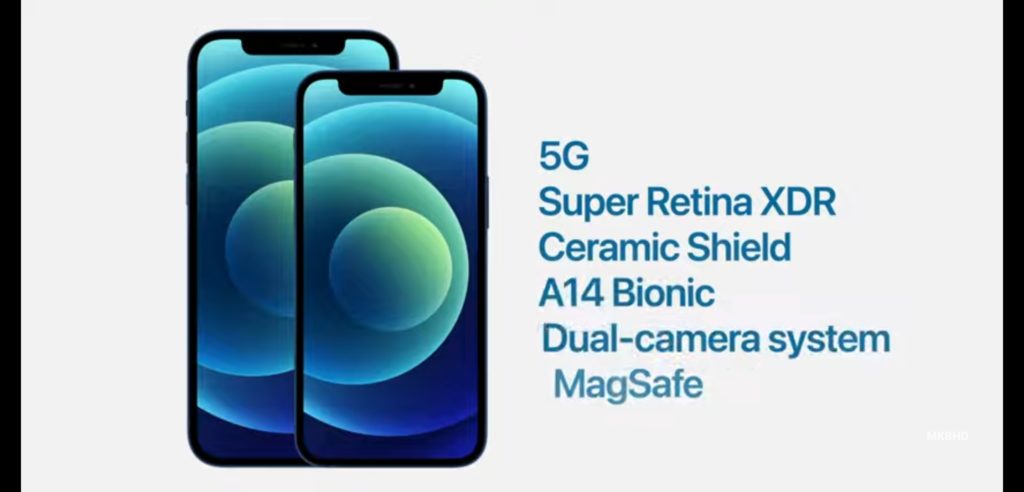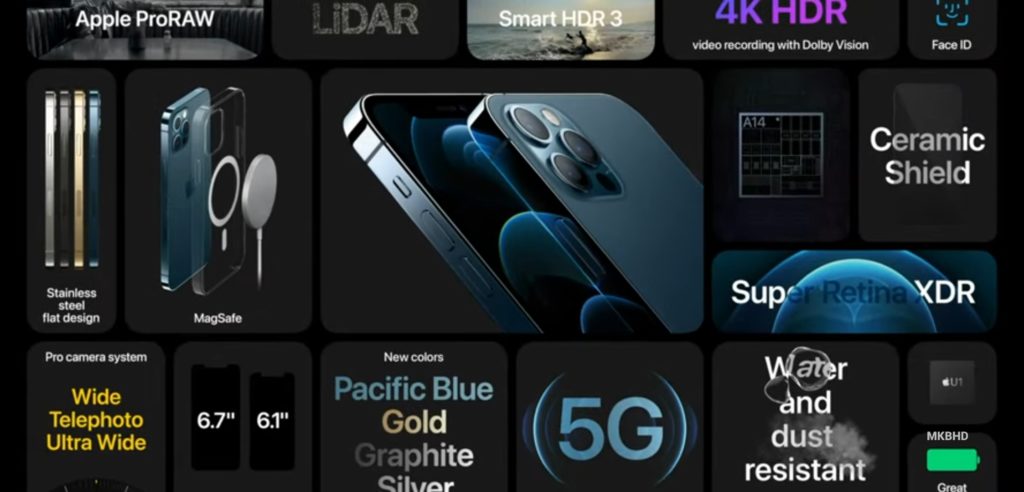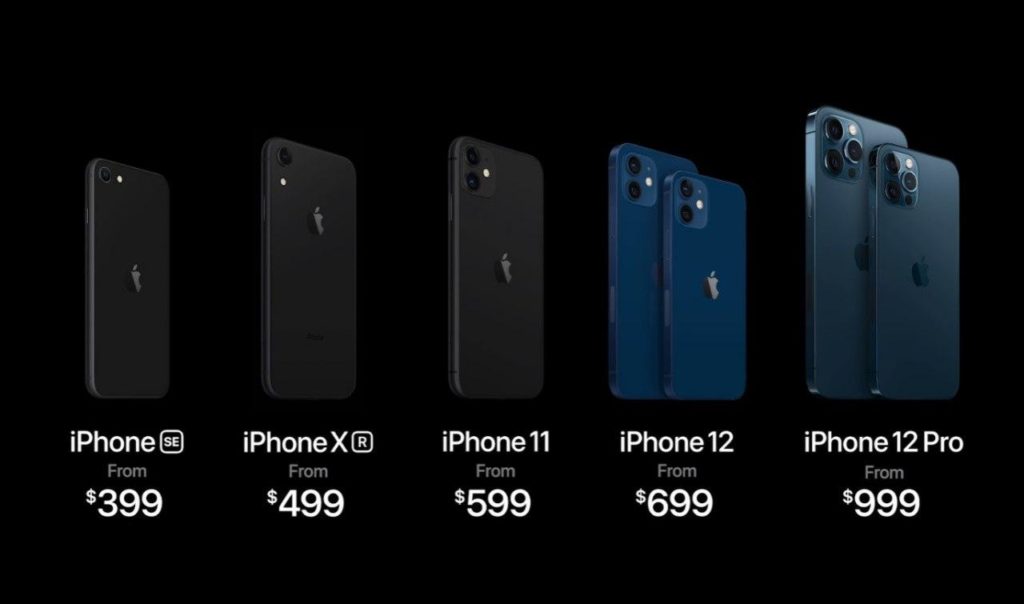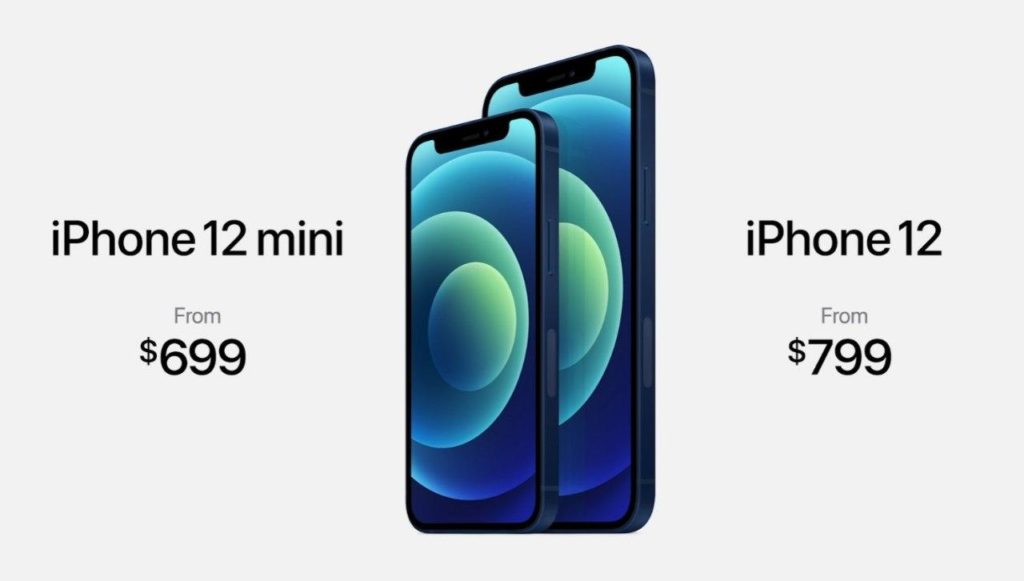Due to the ongoing global crisis that is COVID-19, this event was streamed online across the web. And as expected, we witnessed the launch of a bunch of new Apple devices. Let’s dig in. A total of 5 devices were announced in this event:
The Homepod MiniiPhone 12 MiniiPhone 12iPhone 12 ProiPhone 12 Pro Max
The HomePod Mini is a spiritual sequel to the HomePod we saw back in 2018. It is smaller than its predecessor but Apple says that it lays a lot of emphasis on acoustic performance. It comes with no buttons— only a backlit touch surface for controls— and Siri built-in. It boasts of deep integration with the iPhones, supports Siri shortcuts, and is able to recognize multiple voices making it more useful in a smart home setup.
iPhone 12
All the 2020 iPhone lineups from the iPhone 12 Mini, all the way to the maxed-out iPhone 12 Pro Max will support the 5G connection technology. It is nice to see Apple finally show up to the party. Of course, 5G hasn’t taken off fully in most regions across the globe but the situation is set to change in the next few years. Let’s look at the iPhone 12 as the other devices appear to be derivatives of this base model. iPhone 12 comes with a slightly-refined iteration of the basic design we’ve seen with all iPhones since the iPhone X. The bezels have been pushed further to offer a bigger 6.1-inch display within a similar footprint. Gone are the smooth curved edges as the new iPhone 12 adopts flat sides, reminiscent of what we saw with the iPhone 5 from way back in the day. The chasis is made of Aluminium and the display, Ceramic Shield panels. How durable this is compared to the industry-standard offers from Gorilla Glass remains to be seen. Apple says it is 4x more shutter-proof and we’ll wait to see that tested. Powering this freak-show is the new Apple-made A14 Bionic Chip. And we know the drill; this chip is crazy fast, faster than any other chip in the market today. This A14 Bionic chip is based on the new 5nm process technology, sports a GPU that is up to 50% faster than any other chip today and has 70% faster Machine Learning accelerators. We didn’t quite get to know anything about the devices’ biometric authentication features but seeing as the same notch is present, we can assume that it carries the tried-and-tested FaceID sensors we’ve seen in previous iPhones. To add, the new iPhones are IP68 dust and water-resistant. In the camera department, the iPhone 12 sports 2 sensors, a 12MP ultra-wide and a 12MP wide camera. These are Smart HDR 3-capable and support Night Mode on both lenses. Magsafe is also back. This is supported by wireless charging up to 15W and a whole new ecosystem of accessories that stick on the back of this new iPhone. Now that’s the base model iPhone 12. Also announced was a smaller iPhone dubbed iPhone 12 Mini, a beefier iPhone 12 Pro, and a maxed-out iPhone 12 Pro Max. The iPhone 12 Mini is just that, a smaller iPhone. This sports a 5.5-inch display with the same internals as the iPhone 12, down to the camera sensors. The beefier iPhone 12 Pro sports all the features we’ve seen with the base model and adds an extra 12MP telephoto lens and stretches the overall footprint to accommodate a bigger 6.1-inch display. Where things get interesting is the iPhone 12 Pro Max. This is a complete overkill device with many Pro-oriented features. It sports the same specs as the iPhone 12 Pro, the same design but stretches the display further to a 6.8-inch panel. It supports Deep Fusion on all the cameras including the Front True Depth sensor. It is also capable of recording Dolby Vision videos at 4K 60fps. The included Telephoto lens also zooms out to 2.5x compared to the Pro’s 2x. Also included is the same LiDAR sensor present on the new iPads.
Pricing of the new iPhones
The new devices start at $699 for the iPhone 12 Mini, $799 for the iPhone 12, $999 for the iPhone 12 Pro and the Pro Max will run you a cool $1099.
